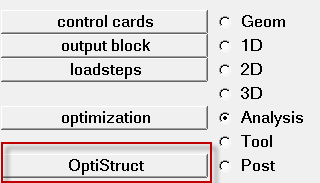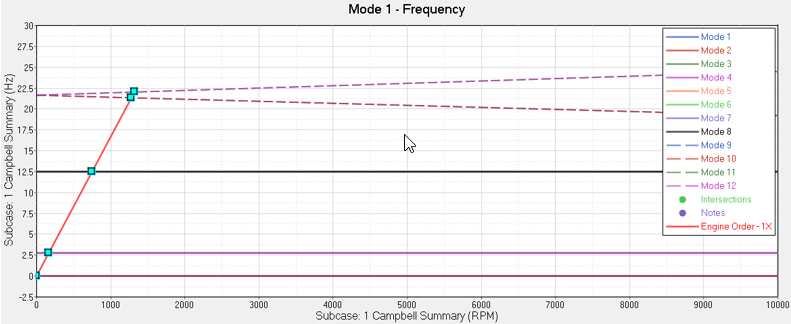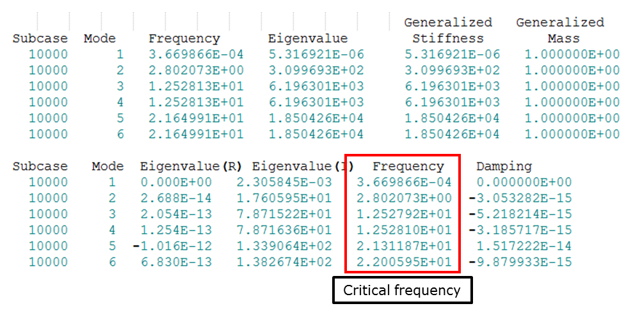OS-T: 1372 Rotor Dynamics of a Hollow Cylindrical Rotor
In this tutorial you will perform Rotor Dynamics analysis on a hollow cylindrical rotor.
For rotating components, additional forces like the gyroscopic force and circular damping force exist and are critical in the study of their response. It is important to determine these effects of rotating components on the system as a whole. Here the complex eigenvalue analysis for 0, 10K, 30K, and 50K RPM are run.
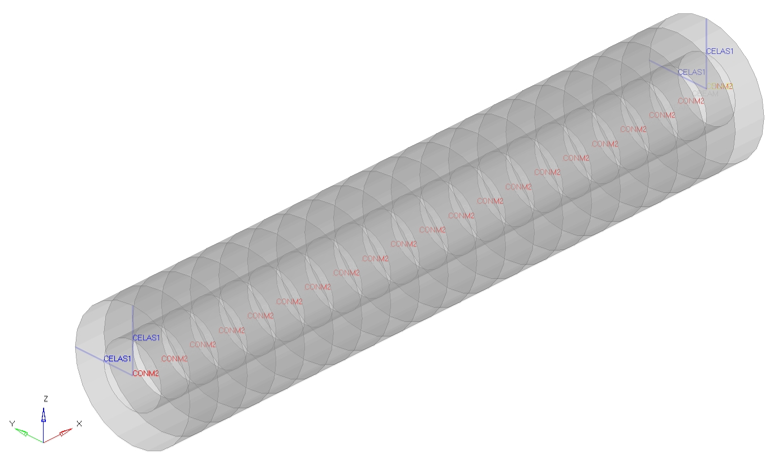
Figure 1. Model Review
- 1D Line Mesh is created using beam elements for the Rotor
- Rotor is defined with Material MAT1
- Rotor is defined with Beam Property
- SPC condition is defined in the model
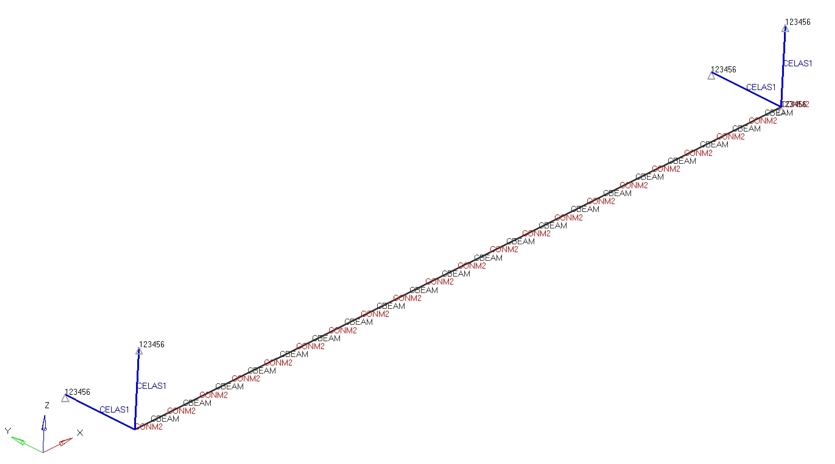
Figure 2.
Launch HyperMesh and Set the OptiStruct User Profile
Import the Model
Set Up the Model
Create EIGRL and EIGC Cards
Define Grids for the Rotor Line Model
- Right-click in the Model Browser and select .
- Click Name and enter ROTORG_SET.
- Click Card Image and select ROTORG from the drop-down menu.
- Click Entity IDs and click on nodes.
- Select nodes by collector and select CBEAM, and proceed.
- Check the box next to the RSPINR field since every rotor defined via ROTORG requires a corresponding RSPINR entry.
- Click the field next to GRIDA and then Node.
- In the selection panel, click Node and enter 10000 in the ID= field.
- Similarly, for GRIDB, enter 10001.
- Click on the field next to SPTID and enter 1.0.
Create RSPEED Load Collector
- In the Model Browser, right-click and select .
- Click Name and enter RSPEED.
- Click Card Image and select RSPEED from the drop-down menu.
- Click S1 and enter 0.0, which is first reference rotor speed.
- Click DS and enter 10000.0, which is increment in reference rotor speed.
- Click NDS and enter 5, which is the number of reference rotor speed increments.
Create RGYRO Load Step Inputs
Define Load Step for Modal Complex Eigenvalue Analysis
- In the Model Browser, right-click and select .
- In the Name field, enter Rotor Dynamics.
- Click Analysis type and select Complex eigen (modal) from the drop-down menu.
- For SPC, select SPC from the list of load collectors.
- For CMETHOD, select EIGC from the list of load step inputs.
- For METHOD(STRUCT), select EIGRL from the list of load step inputs.
- Under SUBCASE OPTIONS, check the field next to RGYRO and then RGYRO_ID.
- Click on the field next to ID to select load step input RGYRO.
Submit the Job
Run the Model
If the job completed successfully, new results files can be seen in the directory where the OptiStruct model file was written. The rotor_sync.out file is a good place to look for error messages that will help to debug the input deck if any errors are present.
 .
. 